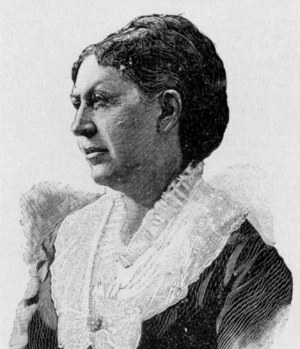Clémence de Grandval facts for kids
Clémence de Grandval (born Marie Félicie Clémence de Reiset) was a talented French composer who lived from 1828 to 1907. She was also known as Vicomtesse de Grandval. During her lifetime, she was a very important and respected composer, even though she is not as well-known today. She often published her music using different names, called pseudonyms.
Contents
About Clémence de Grandval
Clémence de Grandval was born in 1828. She was the youngest of four children. Her family was quite wealthy and lived in a beautiful home called Chateau de la Cour du Bois. Her father was a skilled pianist, and her mother wrote and published stories. Many famous composers and artists visited their home.
Clémence started learning how to compose music at a very young age. Her teachers included family friend Friedrich Flotow and later, the famous Frédéric Chopin. Because her family was rich, she could focus on her music without worrying about money.
She married the Vicomte de Grandval and had two daughters, Isabelle and Thérèse. After her marriage, she continued to compose. She even studied with Camille Saint-Saëns for two years. He was so impressed that he dedicated one of his major works to her! Because of her high social position, she often used different names for her published works. Some of these names were Caroline Blangy, Clémence Valgrand, Maria Felicita de Reiset, and Maria Reiset de Tesier.
In 1881, Grandval won the very first Prix Rossini award. This was a big achievement! At first, she wrote religious music for churches. Later, she created many operas, popular songs, and pieces for musical instruments. She wrote many special pieces for the oboe. Sadly, some of the original music scores for her orchestra pieces have been lost.
During the 1870s, Clémence de Grandval was a key member of the Société Nationale de Musique. She was the most featured composer in this group. She also gave a lot of money to help the organization. In the late 1800s, many music critics admired her work. She passed away in Paris in 1907.
Her Music
Unlike many composers of her time, Grandval wrote many pieces for the oboe. Also, unlike most women composers then, she wrote several operas. Here are some of her well-known works:
Operas
- Le sou de Lise (1859)
- Les fiancés de Rosa (1863)
- Piccolino (1869)
- Atala (around 1888)
- Mazeppa (1892)
Choral Works
- Mass (1867)
- Stabat mater (1870), a type of cantata
- Sainte-Agnès (1876), an oratorio
- La fille de Jaïre (1881), an oratorio
Concertos
- Oboe concerto in D minor, Op. 7
Chamber Music
- 2 pieces for clarinet and piano (1885)
- 4 pieces for cor anglais and piano
- Deux Pieces for oboe, cello, and piano (1884)
Songs
- "Noël!" (1901)
Awards and Recognition
- 1880: Prix Rossini for her oratorio La fille de Jaïre.
- 1890: Cartier Prize from the Conservatoire de Paris for her chamber music.


